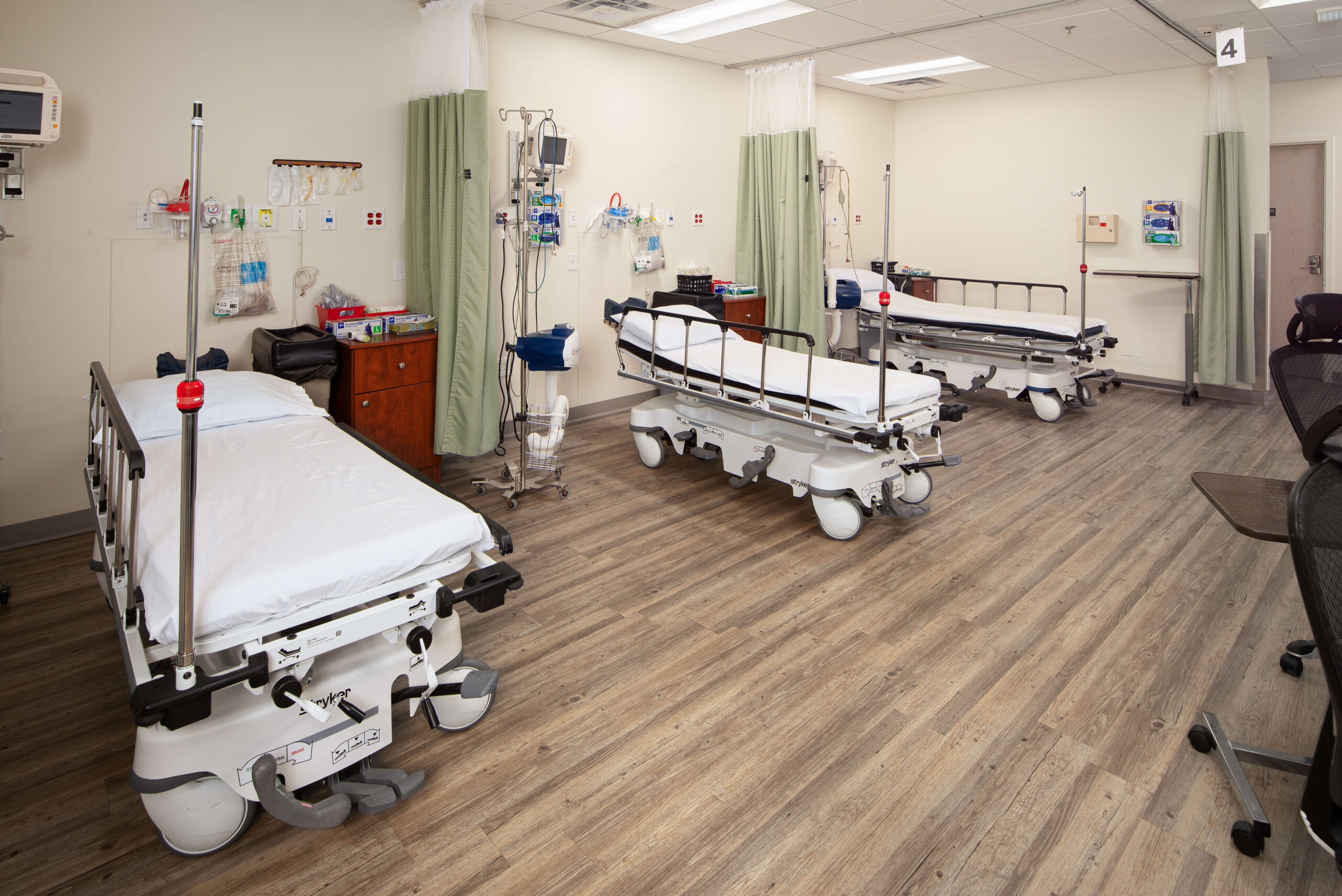
GMC Healthcare design professional Steve Alby, NCARB, LEED AP, spoke to Medical Construction & Design about the decisive strategies to advance your emergency department.
Excerpted from Medical Construction & Design
An emergency department is often a patient’s first contact with a hospital, so a facility with efficient operations, good patient flow and a design that prioritizes a patient’s comfort speaks volumes and enhance patient satisfaction. To make that kind of first impression, leaders are willing to invest in streamlining ED operations and can implement key strategies to achieve their goals, which can include minimizing door-to-doctor time, optimizing turnaround time on any ordered diagnostics, as well as minimizing overall patient visit time in the ED.
With ED planning, every facility is unique: no prototype or static solution exists. The process starts with operations analysis as leaders analyze the current state of care delivery and develop an appropriate strategy that addresses current needs and future projections. Facility managers offer invaluable insight into operational costs, as well as MEP infrastructure capabilities—especially whether future plans can be served with existing capacity. At the same time, contractors provide budget support for weighing various options.
Depending on the size of the ED, as well as current and projected numbers of patients and staff, some strategies may work better than others. That strategy then informs the creation of a master plan, followed by a physical response in the form of design and construction. The following are key insights to advance your ED.

Steve Alby, NCARB, LEED AP, is GMC’s Vice President of Healthcare. He uses his 30+ years of healthcare planning and design experience to create outstanding environments for healthcare clients through high quality planning and design. Click here to contact Steve for more information on healthcare design .